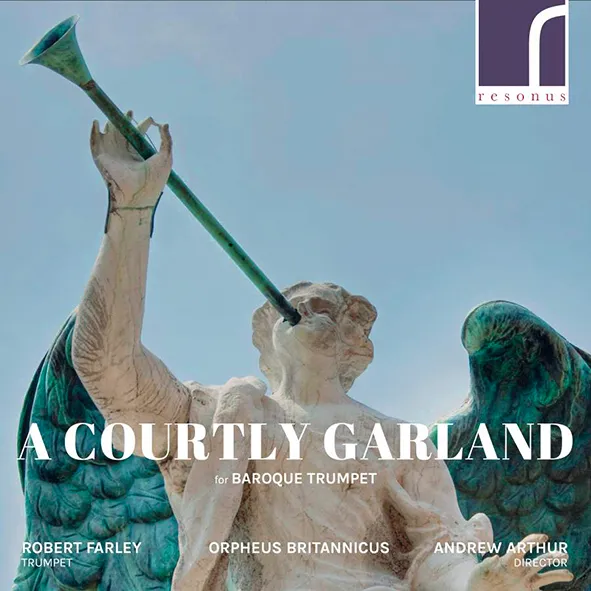
A Courtly Garland for Baroque Trumpet Works by Biber, Corelli, Fantini, Finger, Frescobaldi, A Grossi, B Pasquini, Reiche, Schmelzer, Torelli, and Viviani Robert Farley (baroque trumpet); Orpheus Britannicus/Andrew Arthur Resonus RES 10220 79:57 mins
Reiche’s solo Abblasen sounds the opening fanfare on a disc that explores the trumpet’s assimilation into the 17th century Baroque, Robert Farley’s laser precision and unflappable ebullience take the phrase ‘clarion call’ to the next level. And although, during his first decade in Leipzig, JS Bach was a conspicuous beneficiary of Reiche’s celebrated dexterity, Farley is on a mission to show the trumpet’s earlier evolution from something emblematic of parade ground and battlefield to an instrument capable of chamber music subtlety – Italy at the heart of a seismic shift.
Three works implicate Girolamo Fantini who, in 1634, together with keyboard maestro Frescobaldi, gave the earliest recorded recital of music for trumpet and organ. Two sonatas are by Corelli’s sometime colleague Viviani; Giuseppe Torelli inevitably makes the cut; and there’s Corelli’s only known sonata for trumpet (plus two violins and organ). But Italy doesn’t have the field to itself. Biber, Schmelzer and Gottfried Finger supply welcome contrast, especially when a dash of stylus phantasticus lessens the danger of so many short movements blurring one into another. It’s a danger evidently recognised in the careful programming which rings the textural changes from trumpet plus solo accompaniment to richly layered five-part sonatas including the ear-grabbing interpolation of bassoon in Schmelzer’s Sonata in C. Incisive, rhythmically taut in fast movements, eloquently expressive in slow ones, Farley’s artistry is perfectly complimented by the suave sophistication of Orpheus Britannicus. And buttressed by vivid recorded sound, there’s an alchemy at work that turns not-so-base metal into trumpet gold!
Paul Riley